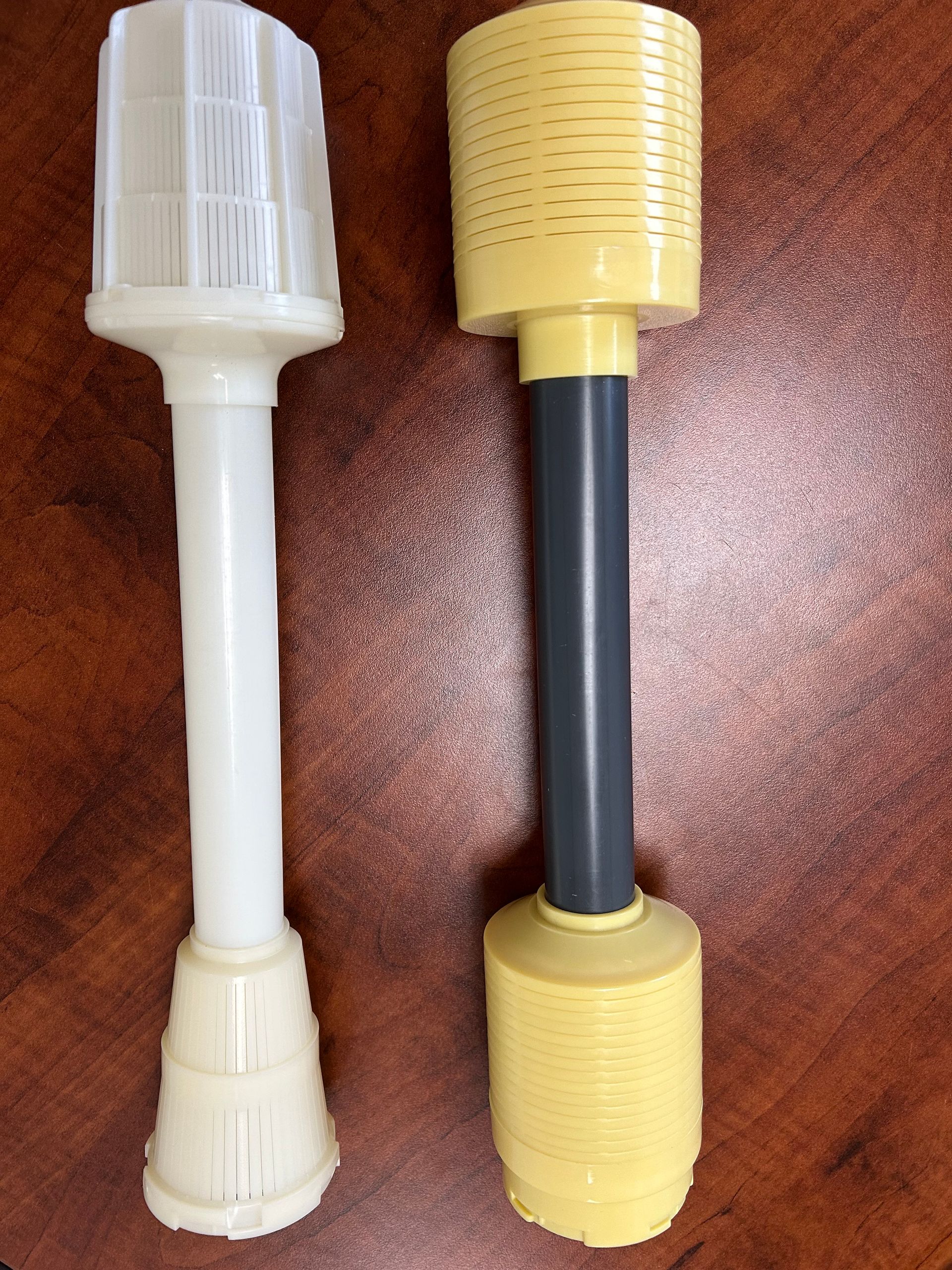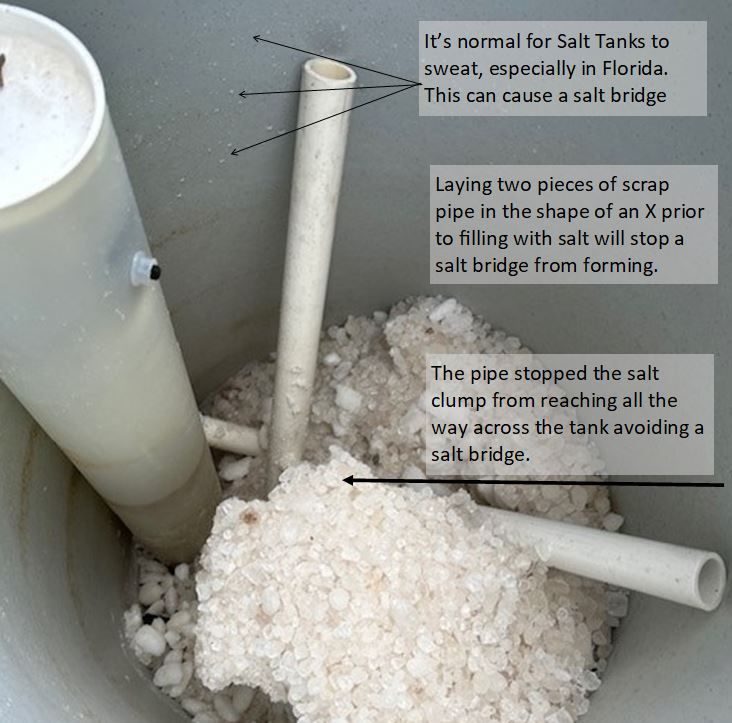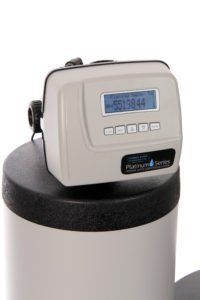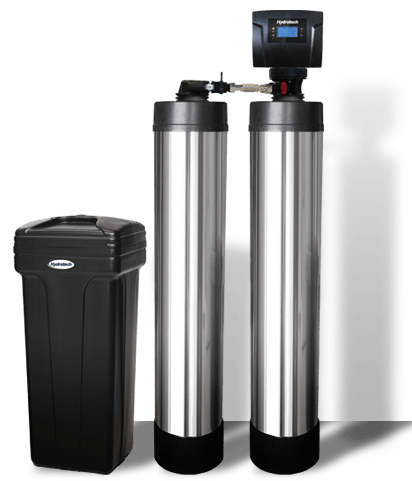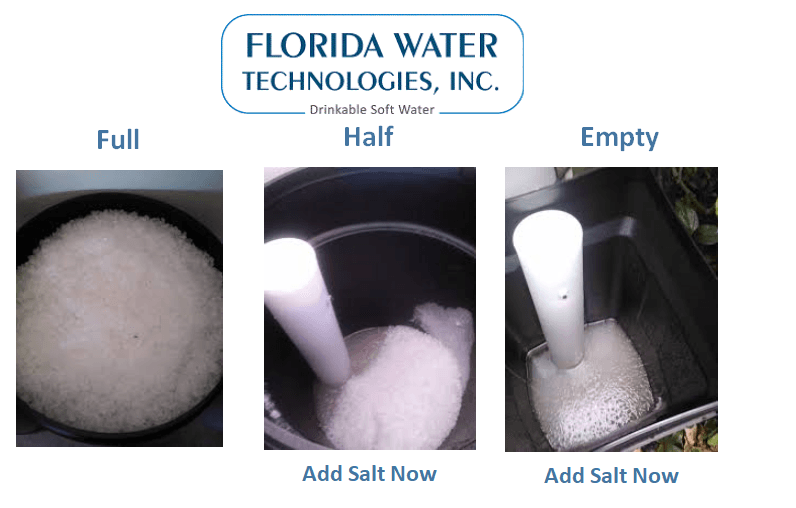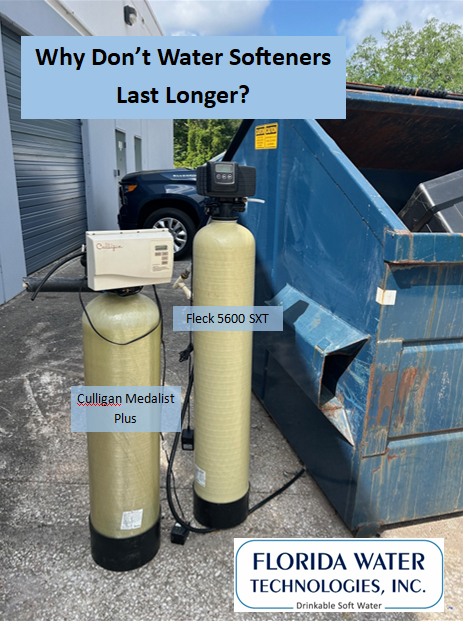Salt is the only ongoing upkeep your water softener requires. You never have to change the salt; you simply add it as needed. Just like your car uses gas so the water softener uses salt. The amount of salt you use will be according to your amount of water consumption and how hard the water is at your home.
When Do I Add More Salt?
Salt can be added as much as you like. Some people prefer to add a bag a month just to make sure that their system has salt. Others, like me, fill it all the way to the top to reduce the frequency of servicing the system. But when you look in the salt pot and see only water it’s time to add a bag or two. The goal is to keep the salt above the water level so that the salt looks dry. This assures a maximum concentration of sodium and thus nice soft water.
Phase One-Full Salt Pot
This is a salt pot that is completely full. I fill my salt pot all the way to the top like this one 2 to 3 time per year, that’s it. (note: individual results WILL vary. Water softeners use salt based on usage. So if your home uses more water the water softener will use more salt. If you use less water the water softener will use less salt.) The point made with this picture is that you dont have to add salt all the time or every month if you dont have the time to do so. Water softener salt pots usually hold between 200 and 300 pounds of salt which will give you some wiggle room when servicing.
Phase Two-Half Full Salt Pot
As the salt is consumed the salt level will become lower and lower. Eventually it will be low enough that the salt level will begin to submerge beneath the water like this. This is a good time to add some salt.
Phase Three-Empty Salt Pot
At this phase the salt pot will be mostly empty with nothing but water inside. Salt should be added immediately to assure soft water for your home. If you run out of salt you run out of soft water.
Where Do I Buy Water Softener Salt In Jacksonville FL?
Salt is for sale almost everywhere. Publix, Walmart, Home Depot, Costco…etc. It’s called water softener salt or solar salt. You simply need Water Softener Solar Salt. Like anything there is usually a generic type brand and a name brand of salt on the shelf. At Publix you will find.
Publix stores in Jacksonville FL:
40 lbs Sun Gems by Dixie Crystals $4.99-$5.99
40 lbs Morton’s pure and natural $5.99-$6.99
Does it matter if I use salt pellets or salt crystals?
No. It has no bearing on the function of the water softener as what form of salt is in the tank. Salt pellets or salt crystals is a preference. Some of the salt brands claim a longer water softener life if you use their brand; however that claim is very difficult to prove.
What about salt with rust remover in it?
Also on the shelf is a bag of salt that costs a little more that has a rust remover additive. This additive is a cleaner that helps the water softener resin stay clean when it is removing iron in addition to hard water. So this type of salt product is not needed on city water in Jacksonville FL. Our city water is very hard but it does not have iron in it so therefore you don’t need the rust remover salt. Rust remover salt is for water softeners installed on private well water.
The post How to Add Salt to a Water Softener appeared first on Florida Water Technologies.
